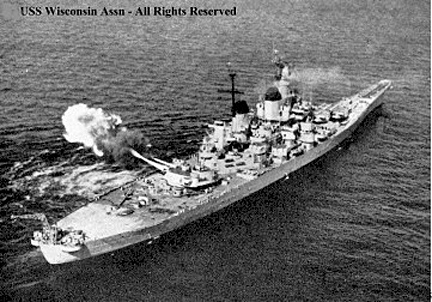Our National Treasure: Battleship Wisconsin
by Martha Walker, Nauticus Curator

75 years ago, the last battles of World War Two were raging all over the globe in Europe, the Soviet Union, Africa, Australia, East Asia, China, and the Pacific islands. It all came to an end in Tokyo, Japan in August 1945, and Battleship Wisconsin was there.
As Wisconsin approaches her 76th birthday on April 16, 2020, we take a look at the early months leading into her World War Two service.
Wisconsin was one of six strategically designed fast battleships authorized for construction in 1939 as Germany and Japan were setting the world on fire. The Iowa-class ships: Iowa (BB-61), New Jersey (BB-62), Missouri (BB-63), and Wisconsin (BB-64) were laid down in quick order, beginning with Iowa in June1940. Each were completed within two years. The Iowas were designed to fire their big guns, support land battles, replenish other ships with fuel, and make fresh water from the ocean with onboard desalinization plants.
Wisconsin was launched December 7, 1943–two years after the attack on Pearl Harbor 7, 1943; Missouri was launched last and inexplicably numbered BB-63.
Wisconsin steamed south from Philadelphia Naval Shipyard to perform her sea trials in Chesapeake Bay. Norfolk was to be her designated home port.
Captain Earl Stone steered BB-64 back to Philadelphia for her shipyard commissioning April 16, 1944. Returning to Norfolk, her crew prepared for war, celebrated July 4th, then departed for her shakedown cruise to Trinidad, British West Indies.
After being put through her paces, Wisconsin sailed south September 24th, transiting Panama Canal into the Pacific Ocean. A week later, she reported to the Pacific Fleet at Ulithi, Caroline Islands. On December 9th, she joined Admiral Halsey’s 3rd fleet and participated in destruction of Japanese facilities in the Philippines.
She earned her first battle stars in the Leyte Operation. The last major challenge of 1944 was “Halsey’s Hurricane”. This Pacific typhoon capsized three destroyers; Wisconsin and most of the fleet remained unscathed.
This was just the beginning of Wisconsin’s role in the Pacific theatre.